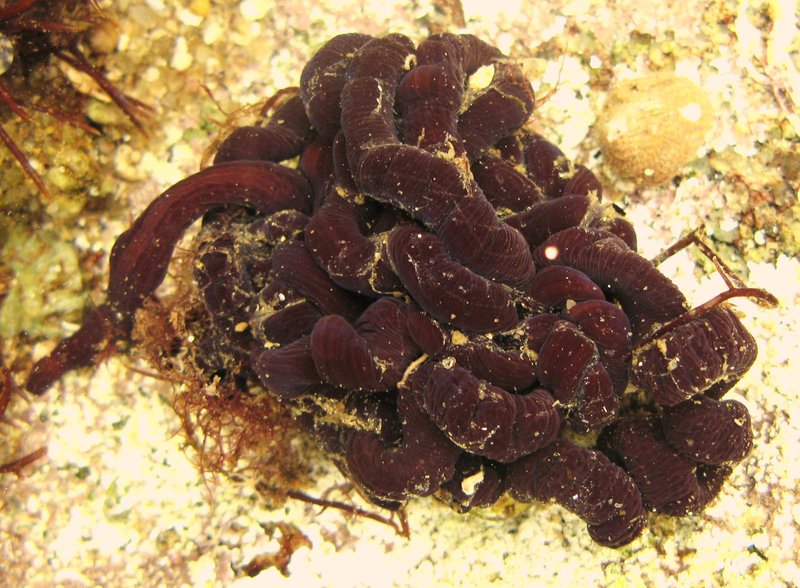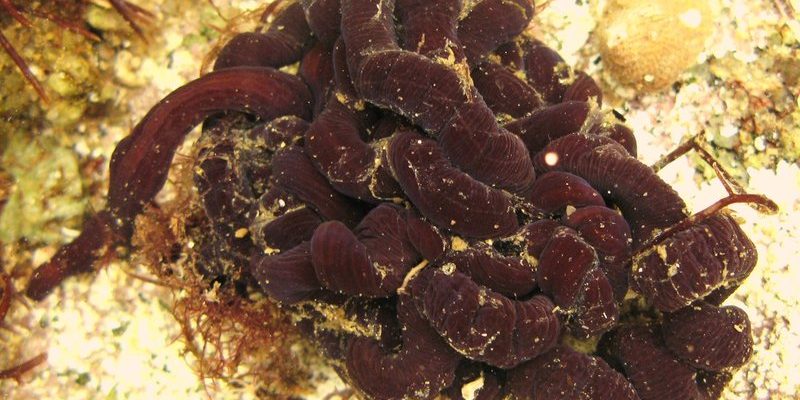
Bootlace worms are a type of marine flatworm, and their scientific name is *Lineus longissimus*. But don’t let the fancy name fool you. These worms are not just long; they’re packed with intriguing features and play important roles in their ecosystems. And speaking of ecosystems, cold-water marine environments are crucial not just for the worms, but for countless other species. So, why should we care about bootlace worms? Well, they help keep the marine food web balanced and contribute to the health of their communities. Let’s explore the captivating life of bootlace worms in the chilly oceans!
What Are Bootlace Worms?
When people think of worms, they often picture something small and maybe a little gross. But bootlace worms are different. These creatures can grow over 30 meters long—yes, you read that right! They might remind you of a long, thin spaghetti noodle and are actually made up of many segments. Each segment allows them to wiggle and move gracefully through the water. They primarily inhabit cold-water regions, like the North Atlantic Ocean and the coastlines of places such as the British Isles.
Bootlace worms are a type of marine flatworm, belonging to the phylum Platyhelminthes. These guys are more than just a pretty face, though. They’re fascinating in their structure: they have a soft, elongated body and a unique way of feeding. Most live in hidden nooks and crannies on the ocean floor. It’s like they’ve got their own secret hideouts. You might find them lurking under rocks or buried in the sand, which makes spotting them a bit of a challenge.
Here’s the thing: despite their stealthy lifestyle, bootlace worms are crucial players in their ecosystems. They help break down organic material, recycling nutrients back into the environment. This process might not be glamorous, but it’s essential for keeping marine life thriving. Without them, other creatures would struggle to find the nutrients they need to survive.
Habitat and Distribution
Bootlace worms are mostly found in cold-water marine ecosystems, where the water temperatures average below 20°C (68°F). You can spot them in the North Atlantic and other chilly waters around the globe. Imagine a chilly underwater world filled with colorful fish, rocky coastlines, and, sneaking around, these long, slender worms. They thrive in unique habitats like rocky substrates, seagrass beds, and sandy bottoms.
Their preferred places aren’t just perfect for them; they also serve as a home for many other creatures. For example, these regions often have plenty of organic material and detritus, which bootlace worms love to munch on. They play a crucial role in the food web by breaking down this material and making it available for other organisms. You might think of them as the ultimate recyclers of the sea!
What’s also notable is how adaptable bootlace worms are. Even though they thrive in cold waters, they can tolerate fluctuations in temperature and salinity. This adaptability means they can survive during tough conditions, like changes in the environment due to climate change. But that doesn’t mean they’re invincible—conservation of their habitats is still essential for their survival.
Feeding Habits
If you’ve ever wondered what bootlace worms eat, you’re in for a treat. These worms are mostly scavengers, feeding on organic matter that settles on the ocean floor. Think of them like tiny recyclers, helping to break down dead plant and animal material. They have a distinctive way of feeding that’s both fascinating and efficient.
Bootlace worms use a special feeding structure called a pharynx. This allows them to extend their mouth and suck in nutrients from their surroundings. Picture a tiny vacuum cleaner! They mainly feed on detritus, which includes bits of decayed plants and tiny organisms. This helps keep the marine ecosystem clean and healthy. So, while they might not be glamorous, their contribution is vital.
Interestingly, bootlace worms can also consume smaller organisms, like tiny crustaceans. They use their long bodies to navigate through the sediment, turning over the substrate like an underwater gardener. By doing so, they aerate the sea floor and promote a healthier environment for other marine life. Honestly, when you look closely, these worms are like the backbone of their ecosystems.
Reproduction and Life Cycle
Bootlace worms have an intriguing reproductive strategy that’s quite different from many other marine creatures. They’re hermaphrodites, meaning each worm has both male and female reproductive organs. This feature allows them to mate with any other bootlace worm they encounter, which increases their chances of reproducing successfully.
During mating, bootlace worms engage in an elaborate dance that can last several hours. It’s a mesmerizing sight! After mating, they can produce a vast number of eggs, which they release into the environment. These eggs eventually hatch into larvae that drift in the ocean currents. This stage of their life cycle can be tough, as the larvae must survive against predators and other environmental challenges.
Once the larvae settle down to the ocean floor, they develop into adult bootlace worms. You might be wondering how long it takes for them to grow up. It can vary based on their environment and food availability, but they generally take several months to years to reach their full length. In some cases, they can live for several years, depending on the conditions around them.
The Role of Bootlace Worms in Ecosystems
Bootlace worms may look simple, but they play an essential role in their ecosystems. They help maintain the balance of marine life by recycling nutrients and breaking down organic matter. Without them, the health of cold-water marine ecosystems could be drastically affected. It’s like trying to keep a garden thriving without the compost—it just wouldn’t work!
Their presence supports many other species in the food web. For instance, many fish species feed on bootlace worms, which makes them an important food source for larger animals. You could say they are the unsung heroes of the ocean, quietly supporting life in a way that often goes unnoticed.
Moreover, as environmental conditions change globally, understanding the role of bootlace worms becomes even more critical. They can act as indicators of ecosystem health. If bootlace worm populations decline, it could signal broader issues in their habitats, such as pollution or climate change. Keeping an eye on them can help scientists gauge the health of cold-water marine ecosystems.
Threats and Conservation
While bootlace worms are resilient, they aren’t without their threats. Changes in ocean temperature, pollution, and habitat destruction can all impact their populations. Climate change, in particular, poses a significant risk as warming waters alter their habitats. It’s like changing the rules of a game in the middle—no one knows how the players will react!
Pollution also plays a crucial role in their decline. Chemicals and waste that enter the oceans can harm bootlace worms. Since they feed on organic matter near the sea floor, they are particularly vulnerable to pollutants that settle there. Reducing ocean waste is essential to safeguard these vital creatures and their ecosystems.
Conservation efforts aimed at protecting cold-water marine ecosystems are crucial for the survival of bootlace worms. This includes establishing marine protected areas and implementing sustainable fishing practices. By focusing on preserving their habitats, we ensure that bootlace worms can continue their important work in our oceans.
In conclusion, bootlace worms are much more than just long, squiggly creatures. They play a vital role in cold-water marine ecosystems, helping to recycle nutrients and support the food web. Understanding their complex lives and the challenges they face can help us appreciate these unique organisms and the ecosystems they inhabit. If we all take steps to protect our oceans, we can ensure that bootlace worms and their fellow marine residents thrive for generations to come.

